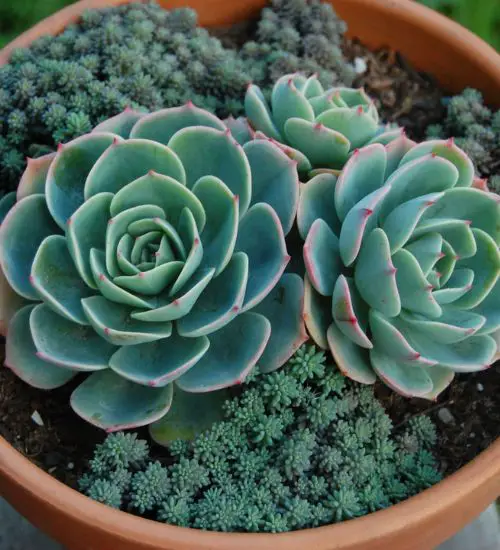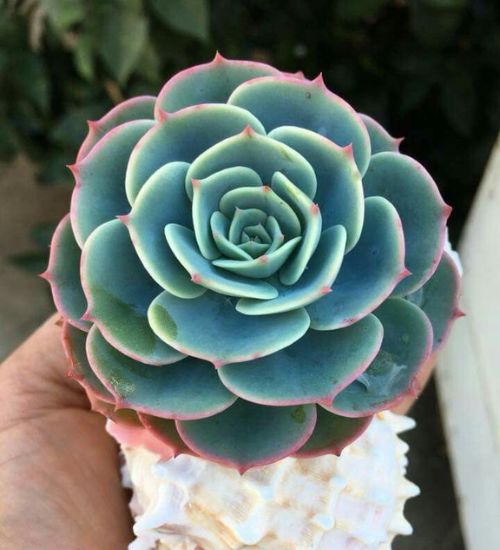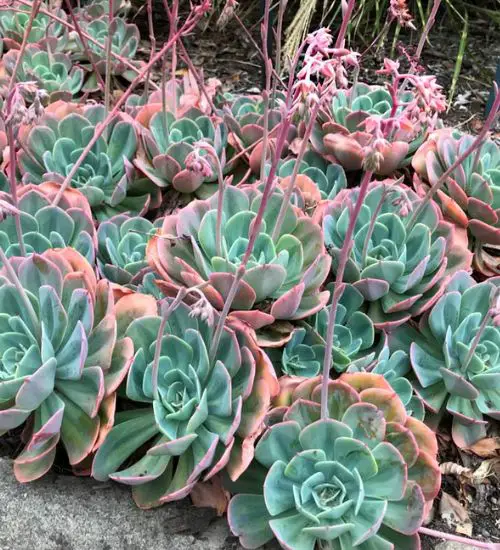Sun: Partial sun to partial shade
Water: Typical water needs for a succulent
Temperature: Zone 9a from 20° F to 25° F (-6.7 ° C to -3.9° C)
Winter Survival: Not cold hardy
Propagation: leaves, offsets
Flower: This succulent does not have flower
Toxic: Generally non-toxic to humans and animals
Dormant: winter
Space Requirement: Indoors & Outdoors
Common Problems: Plants may rot if overwatered, pests
Where to buy Echeveria imbricata?
Basc Care for Echeveria imbricata
Watering
Watering for Echeveria imbricata is a simple task. It requires Typical water needs for a succulent.
Regular watering period should be every 2 weeks
Fertilizing
Only feed this succulent during its active growing seasons which means spring and fall. Use the right fertilizer applied in the right amounts. Applying half-strength balanced fertilizer every month or so is recommended for optimal results.
Do not fertilize during winter as the plant is dormant.
Sun & Location Requirements for "Blue Rose"
Echeveria imbricata loves partial sun and shade. This means it should be placed in a spot that gets some direct sunlight, but also has some protection from the midday heat. It's best to find an area where the succulent can get four to six hours of sun per day.
As per this succulent profile, it is only able to stay healthy when the environment temperature is above the range of zone 9a from 20° F to 25° F (-6.7 ° C to -3.9° C).
When temperatures drop below freezing, it is important to take precautions to protect Echeveria imbricata from the cold. Insulating and providing adequate drainage for the plant are key elements in helping it survive winter weather. Wind and sun exposure should also be minimized to prevent frost damage.
Any succulents in the group will need a medium space to grow. You can place your pot at your table or window. Since this plant needs more space than mini succulents, you should consider do not plant them together with other succulents/plants.
Propagation
Growing succulents from leaves is an enjoyable and rewarding experience. All it takes is a few healthy leaves, some potting mix, and regular watering. Soon you'll have beautiful new succulents that are a product of your effort!
One way to propagate Echeveria imbricata is by offsets. Taking an offset from the mother plant and potting it into soil will give you a brand new succulent with minimal effort.
Toxicity

Echeveria imbricata is not known to pose any significant health risks, as it is not considered to be toxic. However, it is best to keep the plant away from young children and pets, as they may ingest some of the parts of this plant that could contain toxins which can cause mild skin irritation.
Pests and Diseases
Echeveria imbricata can be affected common pests and diseases like most of the other succulents such as aphids and mealybugs.
If you do spot any of pest signs, you can treat your succulent using below methods.
- Aphids: quarantine, clean infected plants, soapy water.
- Mealybugs: quarantine, clean infected plants, soapy water.
Besides that, to prevent serious health issues from happening, keep your succulent in a well-ventilated area and check it regularly for any signs of pests or health problems.


